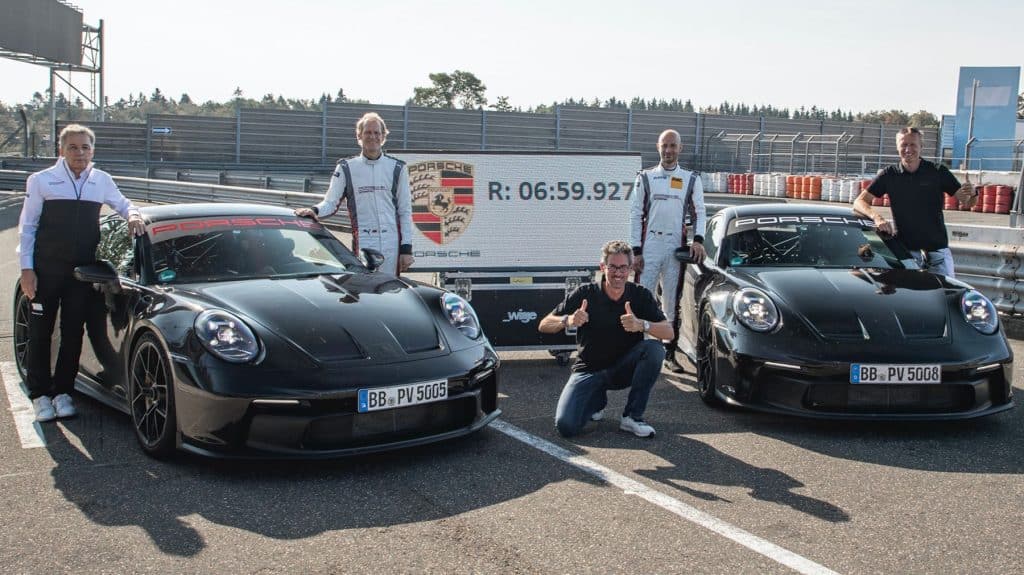The new Porsche 911 GT3 benefits not just from the brand’s most powerful genes, but also from the development work of motorsport legends Walter Rohrl and Jorg Bergmeister, who provided expert analyses of the high-performance race car for the road.
During its final stages of development, Bergmeister and factory driver Lars Kern catapulted the latest Porsche 911 GT3 around the Nurburgring circuit’s infamous 20.8-kilometer Nordschleife. Between the two drivers, Kern recorded the best time among several consistently fast laps, achieving an astonishing 6:59.927 minutes — roughly a minute faster than the time set by the previous-generation car.
“A world of difference,” noted Rohrl.
In 1999, Rohrl drove the first Porsche 911 GT3 on the same track, on which he clocked a time of 7:56.33 minutes.
“We never would have thought that a series production car could lay down a sub-eight-minute lap on the Nordschleife,” Rohrl said.

In the new Porsche 911 GT3, the sports car incorporates more racing technology than any of its predecessors. The layout of the double wishbone front suspension, as well as the swan-neck rear wing and diffuser that optimize the car’s aerodynamics, are just some of these technologies. Also included are components taken straight from the Le Mans-winning Porsche 911 RSR race car.
Powering the new Porsche 911 GT3 is a naturally aspirated 4.0-liter, six-cylinder boxer engine that makes 510 hp at 8,400 rpm. It is based on the racing engine in the Porsche 911 GT3 R, and is used practically unmodified in the new Porsche 911 GT3 Cup. When paired with the standard PDK transmission (a six-speed manual transmission is also available), the engine can propel the latest Porsche 911 GT3 from rest to 100 km/h in just 3.4 seconds, and to a top speed of 318 km/h.
“Over 20 years’ worth of advancements developed for the GT racing cars were adopted in the road car. Balance is the key to driving fast. And I’ve been a weight reduction fanatic all my life. When I learned that the new GT3 — which is much larger and much more capable — essentially weighs just around 70 kilos more than the first GT3, I can only doff my hat to a masterpiece of technology,” Rohrl said.
Credit for the new Porsche 911 GT3’s low weight are racing-derived components like a carbon fiber-reinforced plastic hood, special glass windows, optimized brake rotors and forged alloy wheels. The lightweight sport exhaust system saves 10 kilograms. All of these result in the car weighing in at only 1,435 kilograms. Further lightweight components, such as the exposed carbon fiber roof, are also available.
Without question, the new Porsche 911 GT3 is a race car that went straight into series production sports car.

